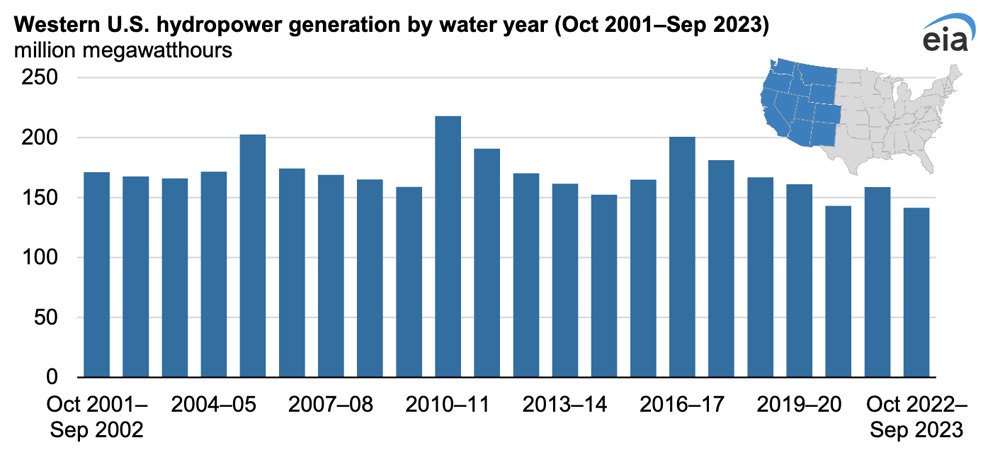Phillips Praises SERC for Leadership in ERO
NASHVILLE, Tenn. — In remarks to SERC Reliability’s Annual Members Meeting on March 27, FERC Chair Willie Phillips applauded attendees for their work as “the tip of the spear” in the struggle to maintain grid reliability.
Phillips, who attended the meeting along with FERC Chief of Staff Ronan Gulstone and Critical Infrastructure and Resilience Adviser Kal Ayoub, said he originally planned to remind members they are critical to advancing the work of the ERO Enterprise and encourage them to pursue greater efforts. But he continued that “after hearing your leadership talk [over the last two days], you don’t need to hear that from me.”
Phillips explained that it was clear that SERC’s members understood their role, along with the problems and opportunities facing the grid. He praised the regional entity for repeatedly showing its willingness to participate in ERO efforts and urged it to continue its leadership as the industry engages rapidly evolving threats like extreme weather and cyber and physical attacks.
“I was in Brussels just about a week and a half ago, and I met with many of … our colleagues in Europe. And I’m telling you, we are the envy of the world with our fuel resource mix, our grid [and] our reliability regime. But we have more work to do,” Phillips said. “At FERC we’re focused on that work. … You’ve heard me talk about my priorities a million times: reliability, transmission reform [and] environmental justice. … Those are my three top priorities for 2024.”
Members Approve New Directors
Also on the agenda at SERC’s Members meeting — which preceded the quarterly Board of Directors meeting — was the election of directors to serve two-year terms beginning June 1 and ending May 31, 2026. Nominating and Governance Committee Chair Tim Lyons presented the slate of director nominees, all of whom were approved:
-
- Cooperative sector: Denver York, East Kentucky Power Cooperative
- Federal-state sector: Vicky Budreau, Santee Cooper
- Investor-owned utility sector: Lee Xanthakos, Dominion Energy South Carolina, and Beth McFarland, LG&E and KU Energy
- Marketer sector: Eric Laverty, ACES
- Merchant electricity sector: Venona Greaff, Occidental Chemical
- Municipal sector: Doug Lego, MEAG Power
- Independent: Lonni Dieck
Most of the directors are returning after a previous term, but York, McFarland and Budreau will step into the seats held, respectively, by Roger Clark of Associated Electric Cooperative Inc., Adrianne Collins of Southern Co. and Virgil Hobbes of the Southeastern Power Administration.
In addition, members approved Paul McGlynn of PJM to replace Stacy Dochoda, formerly of the Florida Reliability Coordinating Council, as the RTO/ISO/Reliability Coordinator sector representative. Dochoda joined the board last year for a term to end May 31, 2025, but retired effective March 27. (See “Members Approve Director Slate,” SERC Board of Directors/Members Briefs: March 29, 2023.) As a result, McGlynn will serve out the remainder of her term.
SERC’s directors passed a resolution honoring Dochoda at their meeting, along with similar resolutions for former Director Manny Miranda — who stepped down from the board last year — and Barbara Ecton, who recently stepped down as senior executive assistant to join the office of the president at Duke University.
Budget Set to Grow in 2025
The board also approved SERC’s draft 2025 business plan and budget, which will be presented to NERC.
SERC’s Finance and Audit Committee will continue to review the draft and submit a final package to the board at its June meeting, following which it will be submitted to FERC for approval along with the budgets for NERC and the other REs.
CFO George Krogstie said in a presentation to members that next year’s budget is expected to grow by $3.3 million to $35.3 million, driven by rising costs in areas like personnel and rent for a new office the RE will move to in 2025. However, he emphasized that “there are no surprises” in the coming year’s budget.
“We’ve been talking about all of these over the last couple of years; we knew our lease was expiring in January of 2025, [and] that rent was going to increase whether we stayed where we’re at or … relocated,” Krogstie said. “Fortunately, we found a really good facility to relocate [to]; that is going to bring us a lot more benefits to what we’re doing than what we currently have.”
Krogstie also said that “a real success story” underlies the personnel costs, noting that the RE has been carrying a 95% vacancy rate for several years. Although personnel costs were under budget, the organization was understaffed. With SERC expanding its staff recently — Krogstie claimed a vacancy rate of less than 1% for the second half of 2023 — it will be better able to meet the challenges of the evolving grid, the CFO said.
SERC’s remaining board meetings for 2024 will be held at its current office in Charlotte on June 12, Sept. 18 and Dec. 11. The next meeting of the RE’s members will take place March 26, 2025, in New Orleans.


